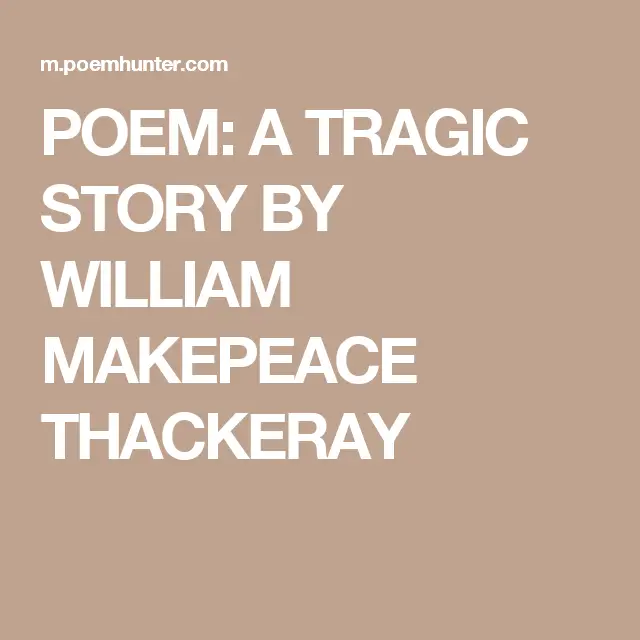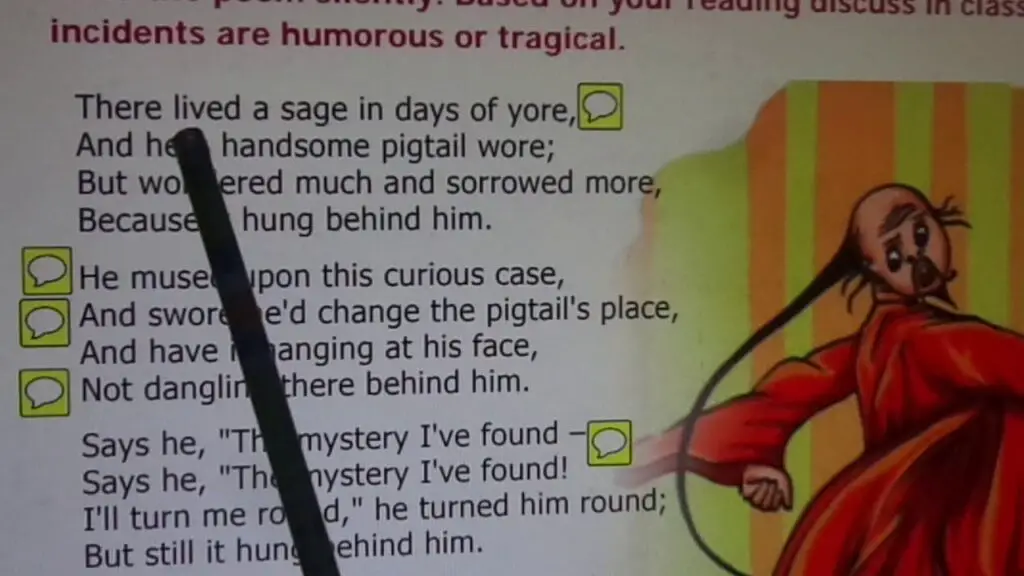If a reader wants to read the best poems of the grandmaster William Makepeace Thackeray, we must say that ‘A Tragic Story’ is one of the best poems.
Theme of A Tragic Story
Throughout the poem, Thackeray explores the pigtail from many perspectives and this becomes an identity to the saint.
That is why identity is one of the major themes of the poem. But why the poet calls it ‘A Tragic Story’ it can not be found.

Maybe this is because of the sage’s expression. Gradually tragedy also becomes a center of the poem that is being highlighted.
Summary of A Tragic Story
‘A Tragic Story’ is consists of a total of six stanzas that enriches the poem and the poet’s thinking. So, the story starts with an explanation of a sage who is having a long pigtail.
The pigtail sometimes looks like a scarf that he always wears. It is sorrowful to the poet as it always hung before him and let not the sage stay in peace.
“He mused upon this curious case,
And swore he’d change the pigtail’s place,”
He thinks of a mysterious case and he changes the place of the pigtail. Here, he is opening an image where the saint is also gets distracted by his own pigtail.
Now it starts hunting over his face and he is dangling it behind him. Then the saint us uttering that he found the mystery and he will make it clear by rounding around himself.
But still, the pigtail is falling. The existence of the pigtail remains the same and he becomes worried about it.
“Then round and round, and out and in,
All-day the puzzled sage did spin;
In vain-it mattered not a pin-
The pigtail hung behind him.”
Times are passing away in this way of round, round, out, and in. The sage spent his days with his long pigtail that never let him get peace.
In all day the sage spins. The saint never gets puzzled nor gets bored and he keeps on spinning every time. But after these all, the pigtail hung before him. Now, in the fifth stanza, the poet gives the movements of the pigtail by some lines,
“And right, and left, and round about,
And up, and down, and in, and out
He turned;”
These are all postures where the tail moves around himself. Right to left, round and round, up and down, and in to out. But still, the pigtail hung before the poet for no relevant reason.
This is just like the shadow of the sage that never leaves the sage alone. A question may come why this pigtail is so important?
Maybe it is because of the purity, and for its greed. The sage never cut his pigtail maybe he feels blessed because of the tail.
Here, in the last stanza, William Makepeace Thackeray explores the truth that the pigtail is faithful to the sage and that is why it stays close to the poet and hung over his head.
A Tragic Story: Analysis
In this poem, William Makepeace Thackeray explores his own feelings on the sage who have a long pigtail but he never gets bored with it.

Maybe a man or a sage who will have a tail like this must be worried but in the case of the saint, it is going different. Maybe he loves the tail because it always stays at his back and does not leave him.
“He turned; but still the pigtail stout
Hung steadily behind him.”
It seems that the hanging pigtail makes the sage happy and he moves it in his way. This is like human measures where people want their life to go with their choices. The sage may feel glad about this pigtail.
A Tragic Story: Literary Devices
The poem consists of a total of twenty-four lines and the rhyme scheme is written that is ‘aaab aaab cccb dddb eeeb fffb’. This a nice composition of Thackeray.
Syncope is one of the major rhetorical devices that Thackeray uses much time. Syncope is a style of writing where the poet writes a word using apostrophe just like, ‘I’ve’, ‘I’ll’, ‘dem’s’, etc.
Alliteration becomes another relevant source of the poem that helped the poet to rich the content. Alliteration is the repetition of the same type of sounds in a single line.
“And though he twist, and twirl, and tack,”
Then comes Anaphora, which is the repetition of the same word or phrase in the starting of two lines one after another.
” And though his efforts never slack,
And though he twists, and twirl, and tack,”
Symbolism is another literary device that means a line or a particular thing is symbolizing something else. ‘Pigtail’ is a symbol that gives meaning to the readers that it is a part of the ‘sage’.
So, these are all literary devices that are being used in the poem.